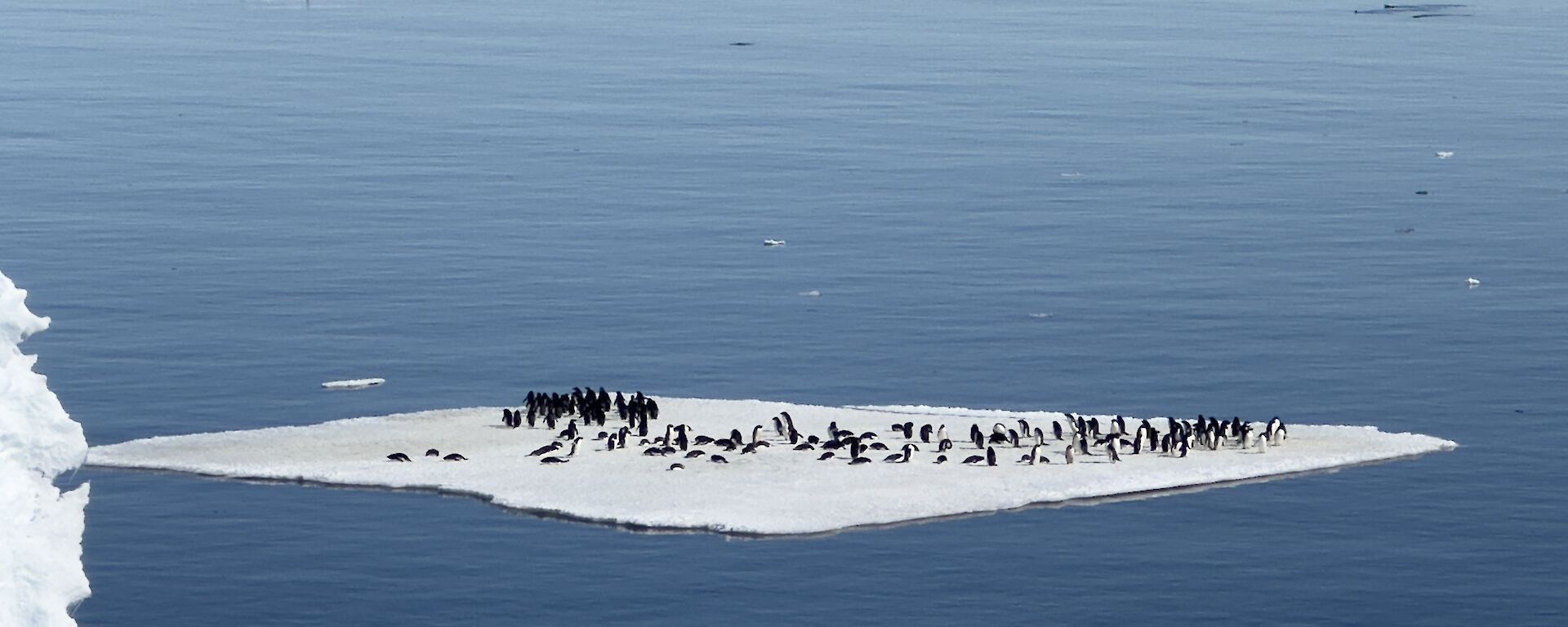
Title: Penguins Are Influencing Antarctica’s Weather—One Dropping at a Time
In the frostbitten expanse of Antarctica, a surprising agent is transforming the atmosphere—penguin excrement. Recent studies are revealing how areas inhabited by penguin guano are generating hotspots of ammonia emissions that initiate the creation of particles necessary for cloud formation. The consequences are extensive, exposing unforeseen connections between animal behavior and regional climate dynamics in one of the planet’s most extreme environments.
It appears that clouds may owe penguins a debt of gratitude.
Ammonia Production on Ice
The pioneering research, undertaken by a global team of atmospheric experts and published in Nature Communications Earth & Environment, concentrated on Adelie penguin populations near Argentina’s Marambio Station on the Antarctic Peninsula. The station served as an ideal site for capturing air samples influenced by prevailing winds from nearby penguin nesting areas—a gathering of over 30,000 breeding pairs.
What researchers discovered was remarkable. Ammonia levels in the air downwind of these penguin colonies reached as high as 13.5 parts per billion (ppb), a concentration comparable to that found in heavily fertilized farmland in temperate regions. In contrast, when the wind came from other directions, such as over the open ocean, ammonia levels diminished to nearly imperceptible amounts.
Even after the penguins relocated from their breeding grounds, the surrounding soil, enriched with organic matter, continued to emit ammonia into the atmosphere. This guano-rich landscape—scientifically referred to as “ornithogenic soil”—served as a continuous source of atmospheric emissions well beyond the peak penguin breeding season.
The Cloud Link
This narrative extends beyond just odorous penguin droppings. Ammonia is crucial for atmospheric nucleation, a phenomenon where gas molecules cluster together to form the precursors for clouds. When ammonia interacts with sulfuric acid, originating from marine organisms like phytoplankton, it aids in the creation of particles known as cloud condensation nuclei (CCN).
These CCNs are vital for cloud formation. Water vapor condenses around them, leading to the clouds that play a role in Earth’s thermal balance and hydrologic cycles. On a day in February 2023, scientists witnessed active nucleation, recording a surge of over 16,000 particles per cubic centimeter in the air. Within just six hours, these minuscule particles expanded sufficiently to produce fog—a visible indication of atmospheric changes driven by penguins.
Key Insights:
– Air downstream from penguin colonies recorded ammonia levels as high as 13.5 ppb
– Particle development was observed only when air currents originated from penguin nesting sites
– The open ocean contributed minimal ammonia despite significant biomass
– Rates of particle nucleation surpassed existing climate models by as much as 10,000 times
– These newly formed particles transitioned into cloud droplets, resulting in localized fog and cloud formation
Beyond Ammonia: A Complex Chemical Composition
Additional examinations indicated that penguin colonies provide more than just ammonia. Minute quantities of dimethylamine, another compound derived from guano, significantly enhanced the nucleation process. Although present at less than one part per trillion, dimethylamine expedited the formation of new particles by several magnitudes.
This occurrence suggests a “multicomponent nucleation mechanism,” wherein various chemicals collaborate efficiently to create atmospheric particles more effectively than each could independently. In isolated regions like Antarctica, where every molecule is critical, this collaboration is essential.
An Emerging Influence in Climate Feedback Loops
The revelation that penguins impact atmospheric chemistry carries important consequences for comprehending polar climate systems. Penguin populations are currently affected by diminishing sea ice, escalating temperatures, and disrupted food webs. If penguin colonies continue to decrease, the resultant drop in ammonia emissions could mean fewer CCNs, reduced cloud cover, and further warming in the region—a self-perpetuating feedback cycle.
Moreover, atmospheric particles have longevity. While ammonia gas itself may linger for only hours in the atmosphere, the particles it helps create can remain much longer. They are carried by air currents, traversing significant distances across Antarctica and even reaching the Southern Ocean. This indicates that penguin colonies not only alter their immediate microclimate but may also influence cloud and weather patterns hundreds of kilometers away.
Reevaluating “Pristine” Polar Air
For years, researchers have recognized a seeming contradiction: despite the plentiful sulfur compounds from marine life, new particle formation was seldom detected over the Southern Ocean. This study addresses part of the mystery by underscoring the lack of ammonia as a crucial element. Without the additional nitrogen provided by seabird colonies, marine sulfur compounds alone are inadequate to initiate the nucleation process.
The findings reveal a deeper reality: the Antarctic atmosphere is not as untainted or biologically isolated as once thought. Rather, it is imbued with the signatures of local ecosystems—rendered more vibrant, foggy, and dynamic by the guano of penguins nesting beneath the clouds they have a hand in creating.
An Evolving Landscape
Antarctica is experiencing one of the